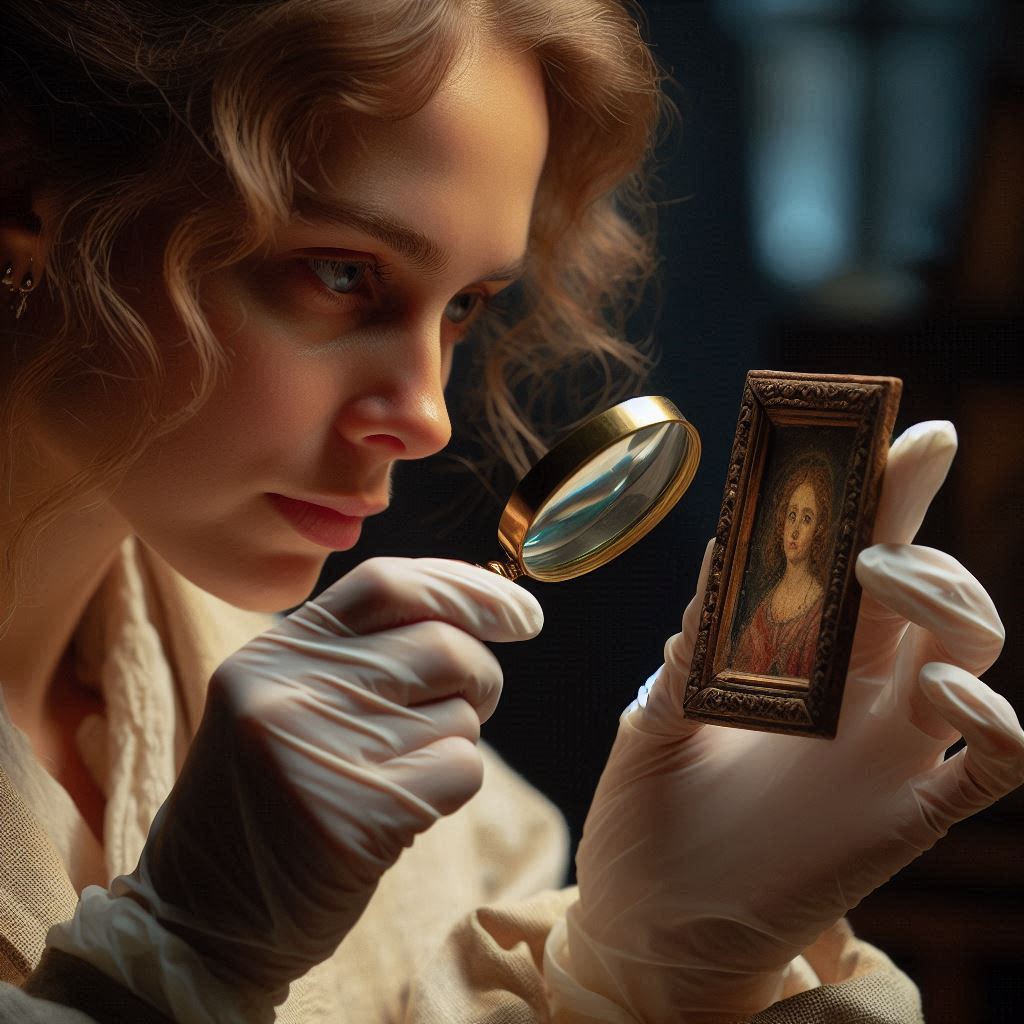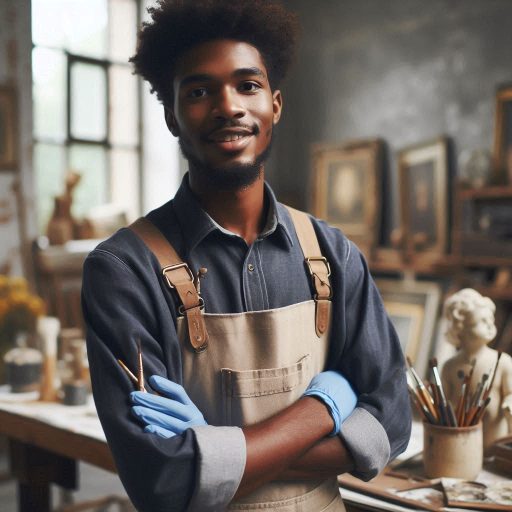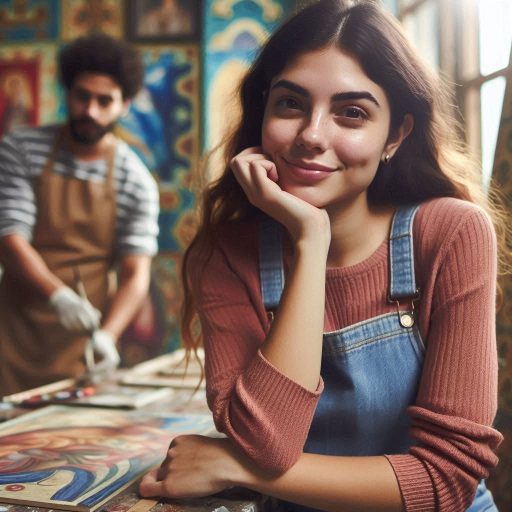Introduction
Art conservation and preservation play critical roles in safeguarding cultural heritage for future generations.
The purpose of this blog post is to delve into the key distinctions between these two important practices.
Art conservation focuses on restoring artworks to their original condition through scientific analysis and careful treatment methods.
Conservationists work to stabilize and repair artworks while respecting the artist’s original intent and historical context.
Art conservators are trained professionals who use specialized knowledge and skills to preserve cultural artifacts for the future.
Art preservation involves preventing deterioration and ensuring the long-term survival of artworks through preventive measures.
While conservation focuses on active intervention to restore artworks, preservation is about preventive care to avoid damage.
Preservation aims to protect artworks from environmental factors, such as light, humidity, and temperature fluctuations.
Both conservation and preservation efforts are essential in maintaining the integrity and longevity of cultural heritage.
Definition of Art Conservation
Art Conservation: Practice of Restoring and Preserving Artworks
Art conservation is the practice of restoring and preserving artworks to extend their lifespan.
This field combines science, craftsmanship, and a deep understanding of art history.
Art conservators aim to maintain the original integrity of an artwork while safeguarding it against deterioration.
The Goal of Art Conservation
The primary goal of art conservation is to preserve an artwork’s original state for future generations.
Conservators work to:
- Retain the artist’s original intent and style.
- Prevent further damage or decay from environmental factors.
- Ensure the artwork remains stable and safe for display and storage.
Techniques and Tools Used in Art Conservation
Art conservation involves various techniques and tools to clean, repair, and stabilize artworks.
Some of the most common methods include:
- Cleaning: Conservators remove dirt, dust, and old varnishes to reveal the original colors and details.
- Repairing: They mend tears, cracks, and structural damage using specialized adhesives and materials.
- Stabilizing: Conservators reinforce fragile areas to prevent further deterioration, often using backing materials or protective coatings.
Conservators utilize advanced technologies, like infrared imaging and x-ray analysis, to study an artwork’s condition and structure.
They also use gentle solvents, brushes, and scalpels to perform precise, delicate work without causing harm.
This careful process respects the artwork’s history while addressing issues that could lead to irreversible damage.
Art conservation is both a science and an art.
Transform Your Career Today
Unlock a personalized career strategy that drives real results. Get tailored advice and a roadmap designed just for you.
Start NowIt requires a deep understanding of an artwork’s materials, techniques, and history.
Conservators often collaborate with scientists, historians, and artists to ensure the most appropriate methods are used.
They strive to preserve the artwork’s authenticity, respecting the artist’s original vision.
By maintaining the original integrity of artworks, art conservation plays a crucial role in protecting cultural heritage.
This practice ensures that future generations can appreciate and study the artistic expressions of the past, keeping the world’s cultural legacy alive.
Read: Networking Tips for Art Conservators/Restorers
Definition of Art Preservation
Art preservation as the act of preventing artworks from deteriorating over time
Art preservation plays a crucial role in ensuring the longevity and integrity of works of art.
By taking proactive measures to safeguard artworks, conservators and institutions can help maintain these cultural treasures for future generations to enjoy.
One of the primary objectives of art preservation is to prevent deterioration and degradation of artworks.
Over time, various factors such as exposure to light, humidity, temperature fluctuations, and pollutants can contribute to the deterioration of art pieces.
By implementing conservation practices, conservators aim to mitigate these risks and prolong the lifespan of the artworks.
The goal of art preservation to protect artworks from environmental factors and damage
Central to art preservation is the concept of preventive conservation.
This approach focuses on minimizing potential risks to artworks before any damage occurs.
Storing artworks in controlled environments, such as climate-controlled rooms or display cases, is a common preventive measure.
These controlled environments help regulate temperature and humidity levels, creating stable conditions for the artworks.
The methods used in art preservation such as storing artworks in controlled environments, using protective materials, and minimizing handling
Additionally, the use of protective materials is essential in art preservation.
Protective enclosures, such as acid-free paper, archival boxes, and UV-filtering glass, can shield artworks from harmful elements.
These materials act as barriers against dust, light exposure, and physical contact, reducing the likelihood of damage to the artworks.
Conservators also stress the importance of handling artworks with care.
Showcase Your Business Today
Reach thousands of readers actively exploring professional services. Publish your business profile and grow your audience now.
Publish NowMinimizing physical contact and use of gloves when handling delicate pieces can prevent fingerprints, oils, and other contaminants from affecting the artwork’s surface.
Proper handling techniques help preserve the original condition of the artworks and minimize the need for extensive restoration in the future.
In addition to preventive measures, conservators may also perform remedial conservation to address existing damage or deterioration.
This process involves careful examination, documentation, and treatment of artworks to stabilize or restore their condition.
Remedial conservation aims to repair damage, conceal losses, and enhance the overall appearance of the artworks without compromising their authenticity.
Art preservation is a collaborative effort that involves the expertise of conservators, art historians, scientists, and other professionals.
By working together, these experts can develop comprehensive preservation strategies tailored to the specific needs of each artwork.
Through ongoing research, innovation, and dedication, the field of art preservation continues to evolve, ensuring the protection and longevity of cultural heritage for generations to come.
Read: Common Misconceptions About Art Conservation

Focus of Art Conservation
Art conservation focuses on actively treating and repairing artworks to restore them to their original condition
Art conservation plays a crucial role in preserving cultural heritage and ensuring that artworks remain in their best possible condition.
It involves a range of processes and techniques aimed at maintaining and restoring artworks to their original state.
Let’s delve deeper into the focus of art conservation and understand its significance in the field of art preservation.
One of the primary aims of art conservation is to actively treat and repair artworks to restore them to their original condition.
This may involve addressing issues such as dirt accumulation, discoloration, paint loss, or physical damage to the artwork.
By carefully assessing the condition of the artwork and applying appropriate treatments, conservators can ensure that the piece remains stable and retains its aesthetic integrity.
Art conservation is typically done by trained professionals with expertise in art restoration techniques
Art conservation is a specialized field that requires expertise in art restoration techniques.
Conservators undergo extensive training to develop the skills and knowledge necessary to work with a variety of materials and mediums.
They must have a deep understanding of art history, chemistry, and conservation ethics to effectively carry out treatments that are both scientifically sound and culturally sensitive.
Examples of common conservation treatments such as cleaning, inpainting, and structural repairs
Conservation treatments can vary depending on the specific needs of the artwork.
One common treatment is cleaning, which involves removing surface dirt, grime, or discolored varnish layers from the artwork.
This process helps reveal the original colors and details of the artwork, enhancing its visual impact and overall appearance.
Inpainting is another essential conservation treatment that involves carefully matching and applying paint to areas of loss or damage on the artwork.
This technique helps integrate the repaired areas seamlessly with the original surface, creating a cohesive and harmonious visual result.
Conservators use a meticulous approach to inpainting, ensuring that the repairs are discreet and reversible.
Structural repairs are crucial for ensuring the stability and longevity of artworks.
These repairs address issues such as tears, punctures, or other forms of physical damage that may compromise the structural integrity of the artwork.
By reinforcing weak or damaged areas and providing support where needed, conservators can prevent further deterioration and ensure the artwork’s preservation for future generations.
Overall, art conservation plays a vital role in safeguarding cultural heritage and preserving the legacy of artists for posterity.
By focusing on actively treating and repairing artworks, conservators contribute to the longevity and integrity of our artistic heritage.
Their expertise and dedication help ensure that future generations can continue to appreciate and derive inspiration from these priceless treasures.
Read: Impact of Technology on Art Conservation
Focus of Art Preservation
Art preservation focuses on preventing damage and deterioration to artworks through proper storage and handling
Art preservation is a critical aspect of maintaining the integrity and value of art pieces throughout time.
By focusing on prevention, preservation techniques aim to prolong the life of artworks and protect them from environmental factors that can cause irreversible damage.
One of the primary objectives of art preservation is to maintain the original condition of artworks as much as possible.
This involves implementing conservation measures that prevent degradation and deterioration, ensuring that future generations can appreciate these treasures.
Art preservation is often the responsibility of museums, galleries, and collectors to ensure the longevity of their collections
Museums play a significant role in art preservation, as they are entrusted with safeguarding and showcasing valuable collections for public viewing.
They must adhere to strict standards and practices to maintain the quality and authenticity of the artworks under their care.
Galleries also prioritize art preservation, as they exhibit and sell artworks that need to be preserved for their value and cultural significance.
Proper storage, handling, and maintenance are key components of gallery operations to protect the artworks they represent.
Collectors who acquire valuable artworks have a responsibility to preserve them for future generations to enjoy.
Showcase Your Business Today
Reach thousands of readers actively exploring professional services. Publish your business profile and grow your audience now.
Publish NowImplementing preservation techniques ensures that their collections retain their beauty and historical relevance over time.
Examples of preservation practices
Using archival materials is crucial in art preservation to prevent chemical reactions and deterioration caused by unstable materials.
Acid-free papers, protective packaging, and stable framing materials are examples of archival supplies that help safeguard artworks.
Controlling temperature and humidity levels is essential to prevent mold growth, warping, and fading of pigments in artworks.
Maintaining stable environmental conditions prolongs the lifespan of artworks and reduces the risk of damage from fluctuating climates.
Limiting exposure to light, especially ultraviolet (UV) rays, is crucial in art preservation to prevent fading and discoloration of artworks.
Using UV-filtering glass for framing and regulating lighting levels in display spaces help protect artworks from light-induced damage.
Art preservation requires a comprehensive approach that combines preventive measures with periodic assessments and treatments to address any existing damages.
Conservation professionals play a vital role in assessing, documenting, and treating artworks to ensure their long-term preservation.
In a nutshell, art preservation is essential for maintaining the aesthetic, cultural, and historical value of artworks for future generations to appreciate.
By focusing on preventive measures and implementing best practices, museums, galleries, collectors, and conservationists contribute to the longevity and integrity of our artistic heritage.
Read: Art Conservation Techniques and Best Practices
Preservation vs. Conservation Goals
Art preservation and conservation, though closely related, have distinct goals and approaches.
Understanding these differences is crucial for effective management of artworks.
Restoring Versus Preventing Damage
Art conservation focuses on reversing existing damage.
Conservators work meticulously to repair and restore artworks, aiming to bring them as close as possible to their original state.
They use various techniques to stabilize deteriorated materials and mend physical damage.
In contrast, art preservation is proactive. It seeks to prevent future damage rather than fix past issues.
Preservation strategies involve maintaining the current condition of artworks and protecting them from potential threats.
This can include controlling environmental conditions, using protective covers, and ensuring proper storage.
Restoring Existing Damage
Art conservation is fundamentally about restoration.
Conservators assess artworks to identify damage and deterioration.
Their goal is to reverse these effects, employing specialized tools and techniques.
This might involve cleaning, repairing tears, or reattaching loose elements.
The aim is to preserve the artwork’s historical integrity while enhancing its appearance and stability.
Maintaining Current Condition
Art preservation takes a different approach.
The focus is on preventing damage rather than fixing it.
Preservationists implement measures to maintain the artwork’s existing condition.
This includes controlling light, temperature, and humidity levels to minimize deterioration.
They also use archival-quality materials for storage and display to avoid harm.
All in all, art conservation and preservation serve complementary roles.
Conservation seeks to restore damaged artworks to their original state, while preservation focuses on preventing future damage and maintaining current conditions.
Both are essential for ensuring the longevity and integrity of cultural heritage.
Conclusion
The key differences between art conservation and preservation lie in their approaches.
Art conservation focuses on repairing and restoring artworks to their original state through meticulous techniques.
On the other hand, art preservation aims to prevent further deterioration by controlling environmental factors.
Both practices are vital in safeguarding artworks for future generations to enjoy and appreciate.
Art conservation ensures that the aesthetic and historical value of artworks is preserved for years to come.
Art preservation, on the other hand, ensures that the physical integrity of the artwork remains intact.
By understanding these differences and the importance of both practices, we can better appreciate the value of preserving cultural heritage.
Showcase Your Business Today
Reach thousands of readers actively exploring professional services. Publish your business profile and grow your audience now.
Publish NowI encourage readers to delve deeper into the world of art conservation and preservation to gain a deeper respect for our artistic legacy.
[E-Books for Sale]
The Big Book of 500 High-Paying Jobs in America: Unlock Your Earning Potential
$19.99 • 500 High-Paying Jobs • 330 pages
Explore 500 high-paying jobs in America and learn how to boost your career, earn more, and achieve success!
See All 500 High-Paying Jobs of this E-Book
1001 Professions Without a Degree: High-Paying American Jobs You Can Start Now
$19.99 • 1001 Professions Without a Degree • 174 pages
Discover 1001 high-paying jobs without a degree! Unlock career tips, skills, and success strategies for just $19.99!




